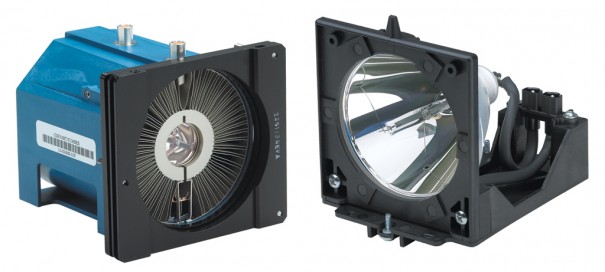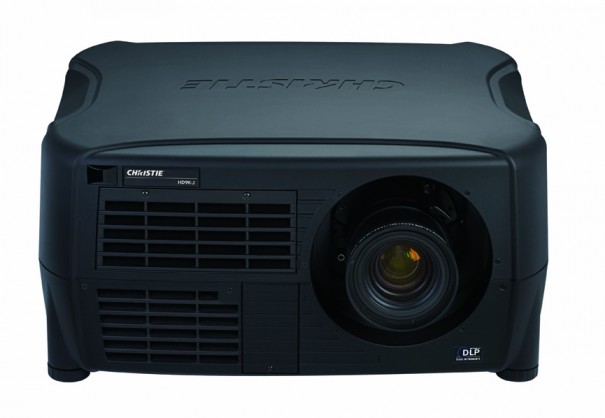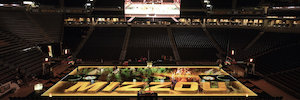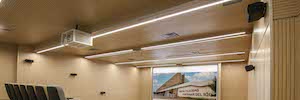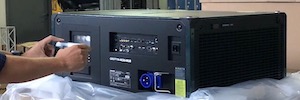Xenon lamps vs mercury vapor lamps
Over the years, projectors have been evolving at the pace of the latest technological advances in line with the trend to achieve screens of greater dimensions and higher resolutions. Digital projectors typically use high-intensity discharge lamps containing xenon or mercury vapor. Mark Fernandez, Country Manager for Spain and Portugal by Christie, highlights in this article the benefits in terms of performance of the former versus the latter.
Despite its internal complexity, the function of digital projectors is very simple: project a large format image from a video source, data and graphs on a projection surface; and for this an internal light source is necessary. Due to the high degree of magnification required by the projected image and the number of optical elements in the journey from the light source to the screen, the brightness of the light source must be very high; even more than the typical fluorescent and incandescent lamps used in offices and other enclosed spaces.
The two most widespread technologies in digital projection solutions are mercury vapor lamps and xenon lamps. In both cases, the lamp emits the light by passing current through a gas subjected to very high pressure (of several hundred atmospheres) inside a molten quartz tube. The current flowing between the electrodes of the lamp (what is called the arch) ignites the gas making it shine.
The active gas found in mercury vapor lamps is, as its name indicates, mercury heated to a gaseous state that has been mixed with other gases to facilitate start-up, improving its performance and reliability; while, in the case of xenon lamps the gas used is xenon gas. This basic difference between the two lamp technologies leads us to establish a series of practical differences in terms of the properties and performance of the projectors that include these technologies..
Differences in performance
When it comes to performance, the fundamental difference between xenon and mercury vapour lamps lies in the chromatic spectrum of the light they emit.. A xenon lamp radiates a fairly flat spectrum with more or less similar intensities at all wavelengths throughout the entire visible range. (between 400 nm and 700 nm), approaching the neutral white color of natural light. On the other hand, the typical emission spectrum of mercury vapour lamps is much less uniform, showing a series of maximum and minimum peaks along the entire visible range, where the highest peak is found in the region of yellows. The red end of the mercury vapor spectrum also suffers a downward trend compared to the blue end, shown as a cold white.
The spectrum of rising and falling peaks of the mercury vapor lamp means that projectors with this type of lamps usually offer poorer reproduction of colors., versus projectors that include xenon technology. The measure responsible for determining the accuracy with which colors are reproduced is known as the chromatic performance index or IRC. In order to improve IRC, the light path of the projector may be designed in such a way as to better balance the spectrum of mercury vapour over the entire visible range and reduce the height of the peaks, even if it is at the cost of a considerable drop in the light output. Some mercury vapor-based projectors include a motorized yellow-separating slot filter that, if necessary, could be placed in the path of the light to improve the accuracy of the projector colors, reducing the brightness level as a counterpart.
Another difference in performance between mercury vapor lamps and xenon lamps is the stability of the spectrum over time. The peaked spectrum of mercury vapor lamps involves a considerable change in the color reproduction of a projector., which may be affected as the lamp has its birthday. On the contrary,, in the case of xenon lamps, the flat spectrum affects relatively little color reproduction over time.
Xenon also enjoys a very short-term stability advantage, that manifests itself from the very moment of ignition, maintaining a flat spectrum as it heats up. In addition, can reach its full brightness capacity in considerably less time than mercury vapor lamps.
Operational considerations
 In terms of on-screen performance, xenon has a clear advantage over mercury vapor. However, the tables are turned when assessing traits such as efficacy, service life and operating cost.
In terms of on-screen performance, xenon has a clear advantage over mercury vapor. However, the tables are turned when assessing traits such as efficacy, service life and operating cost.
First of all, Mercury vapor lamps are much more effective than xenon lamps in converting electrical energy into light. Indeed, usually, to obtain the same light output, a projector with a mercury vapor lamp requires less energy to operate than a projector with a xenon lamp. This will depend on the level to which the light output has been sacrificed for improved colour accuracy. (as described above). Projectors that run on less power don't usually overheat, making them more reliable and quieter.
Secondly, mercury vapour lamps enjoy a much longer service life, with a minimum duration of 1.000 hours that can reach even 10.000 depending on the power of the lamp. while, the life of xenon lamps ranges from 500 hours and a maximum of 4.000.
The combination of high efficiency and long service life makes mercury vapour technology the third and decisive advantage: significantly lower operating costs.
Both technologies require very simple maintenance.
Mercury vapor lamps, as is the case with Philips' very high performance UHP lamps and Osram's high-quality P-VIP video projection lamps, are pre-aligned modules that include independent reflectors easily replaceable by the user. Perkin Elmer Cermax xenon lamps are another example of pre-aligned modules. There is another common xenon lamp configuration, known as bubble type lamp, that can be designed in previously aligned modules offering the same ease to the user for its replacement and allowing to replace the lamp in the factory as many times as necessary.
Containing a small amount of mercury, Mercury vapor lamps require extra care when it comes to getting rid of an old lamp. Even so, both types of lamps must be disposed of safely and responsibly in accordance with environmental requirements for the disposal of this type of waste.
Applications
Given the different advantages and disadvantages of mercury and xenon vapor lamps, it is clear that certain projector applications will be better suited to one type of lamp than the other. Mercury vapor lamps are the best choice when what is at a premium is a reduced operating cost and as long a lamp life as possible, while if the priority is to achieve maximum color accuracy and chromatic stability, the best option will be xenon lamps.
Another issue to consider is the light output required by the projector, which may depend on screen size and ambient light. Projectors with mercury vapor lamps reach brightness levels that exceed those of traditional models and this seems to continue to be the trend in the future. In fact, models that together include two or more lamps are considered to offer brightness levels high enough for use in ProAV applications. However, today, achieving the highest light output levels in digital projectors is only possible with xenon lamps.
For example, DLP projectors 3 Christie M Series chips are based on mercury vapor lamps and offer a brightness level between 2.500 ANSI lumens and 9.500 ANSI lumens, while the models of 3 Christie chips including xenon lamps offer a light fork between the 2.000 ANSI lumens and 30.000 ANSI lumens. Xenon technology is the most logical option when projecting on large screens or facing high ambient lighting.
Projector size is another factor to consider. How mercury vapor lamps are more efficient and consume less energy, the size of the lamp may be smaller, which in turn has allowed the development of much smaller projectors. Some are so small that they can fit in a briefcase, leaving even plenty of space. Even so, despite Cermax's tiny xenon lamps and the shrinking dimensions of xenon-based projectors, Mercury vapor has become the favorite technology of small projectors thanks to the advantage of its reduced cost.
Conclusion
The most important characteristics of each of the lamp types determine the choice of mercury or xenon vapor technology for a particular application. The life of mercury vapor lamps is usually longer than xenon lamps and maintenance costs are lower. In addition, are commonly used in smaller projectors. On the other hand, xenon technology is the best choice when the highest level of on-screen performance is required, for both brightness and color accuracy. Christie offers a wide variety of digital projectors based on both technologies for each specific need.
Mark Fernandez
Country Manager of Christie for Spain and Portugal
You liked this article?
Subscribe to our RSS feed And you won't miss anything.



